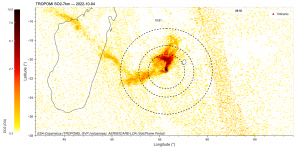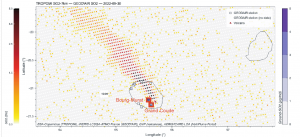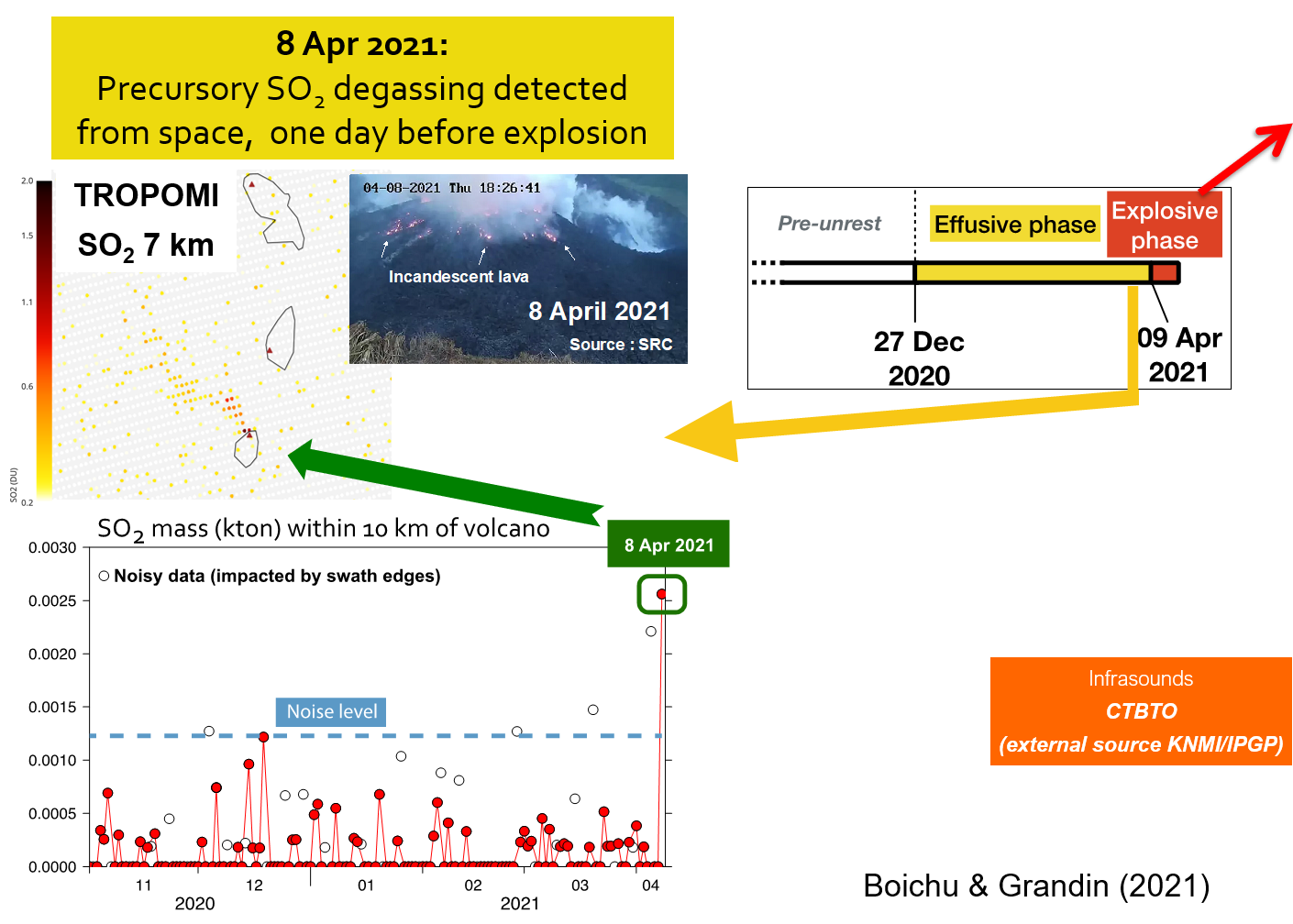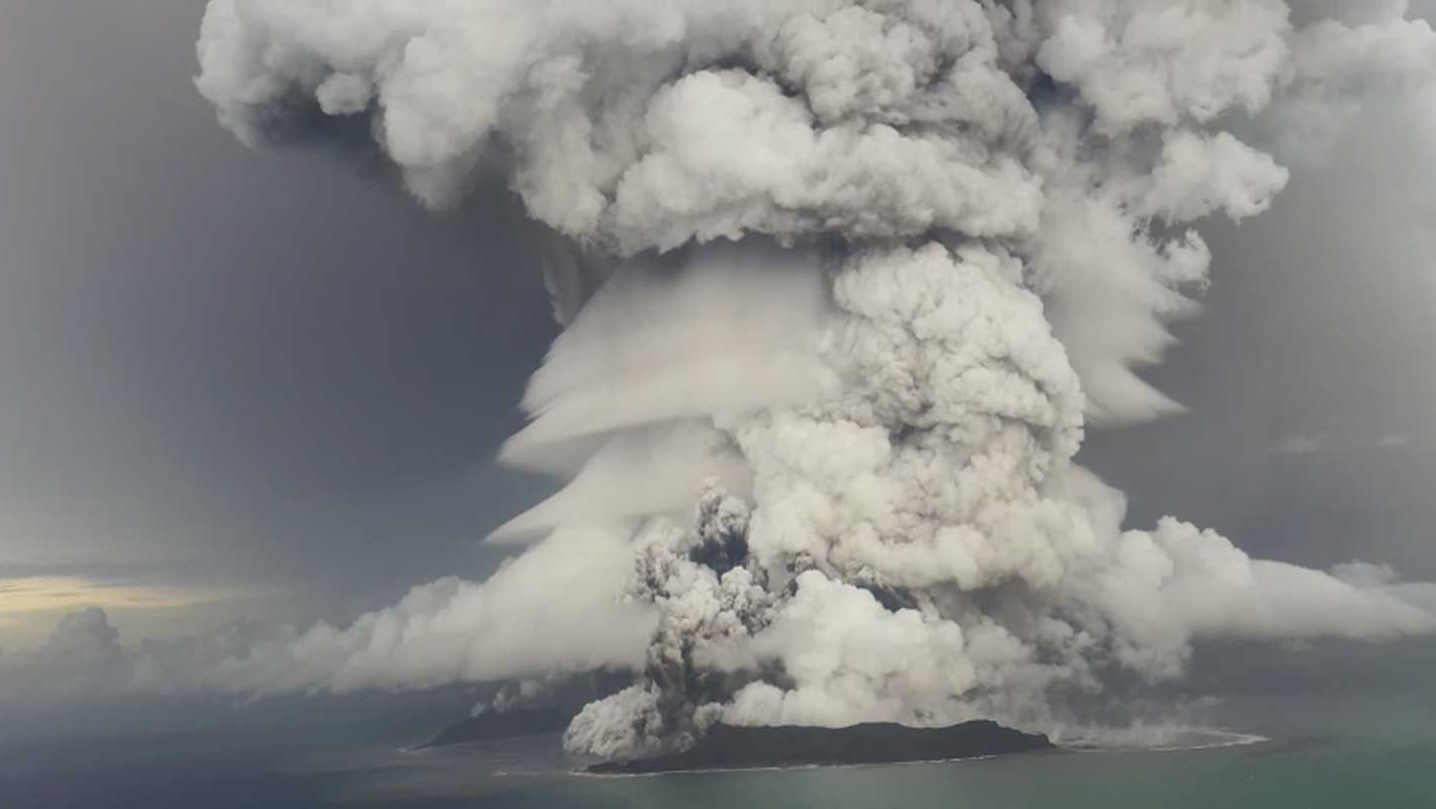THE ERUPTION OF PITON DE LA FOURNAISE OBSERVED BY THE WEB PLATFORM VOLCPLUME
The Piton de la Fournaise, reaching an altitude of 2,632 metres, is the active volcano on the island of Reunion in the Indian Ocean. Piton de la Fournaise is one of the most active volcanoes on the planet: in terms of the frequency of new eruptions (on average one every nine months over the last ten years), and in terms of the average volume of lava emitted, it is about ten times less productive than Kīlauea, but comparable to Etna. Since the end of 1979, the activity of Piton de la Fournaise has been monitored and followed by the Observatoire Volcanologique du Piton de la Fournaise (OVPF), one of the volcanological observatories of the Institut de Physique du Globe de Paris (IPGP).
On September 19th, the Piton de la Fournaise erupted again.
The VolcPlume observation platform, developed by the Laboratoire d’Optique Atmosphérique (University of Lille) in collaboration with the AERIS/ICARE Data and Services Centre, makes it possible to monitor volcanic emissions and plumes in the atmosphere thanks to a combination of data from satellites and networks of ground-based measurement stations. Using Sentinel-5P/TROPOMI satellite observations developed within the framework of the Copernicus atmospheric monitoring programme, scientists were able to describe the evolution of sulphur dioxide (SO2) degassing activity associated with the effusive activity of Piton de La Fournaise, which reached its highest intensity on 4 October 2022 (Fig 1). A sharp drop in the outgassing of Piton de La Fournaise is then observed, coinciding with the cessation of the seismic signal called “eruptive tremor”, recorded on the morning of 5 October by the Observatoire Volcanologique du Piton de La Fournaise, which indicates the cessation of lava emissions at the surface. Indeed, from October 6, 2022, a level of degassing is recorded reaching values similar to those recorded before the start of the eruption.

The sulphur-rich off-gas emitted during this eruption may have led to an increase in the SO2 concentration recorded on the ground by the air quality monitoring stations managed by Atmo Réunion, as illustrated in Figure 3 at the Bourg-Murat and Grand-Coude stations. Hourly values of more than 300 g/m3 were thus recorded on 30 September 2022.

Read more :








